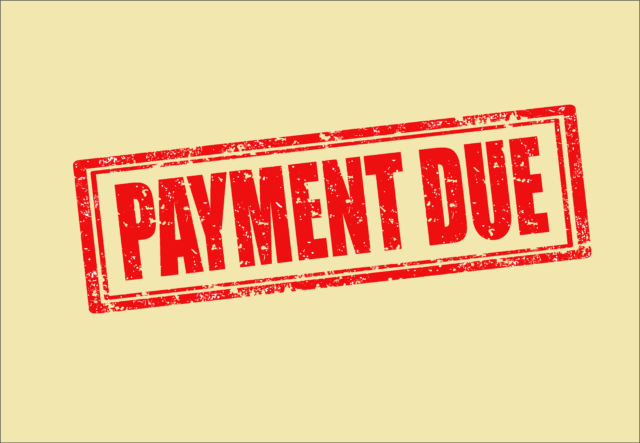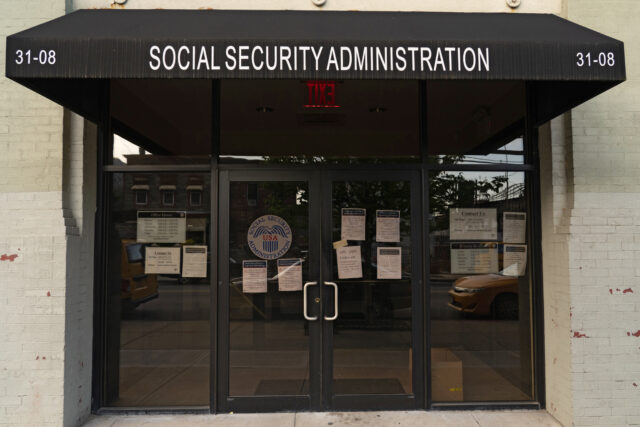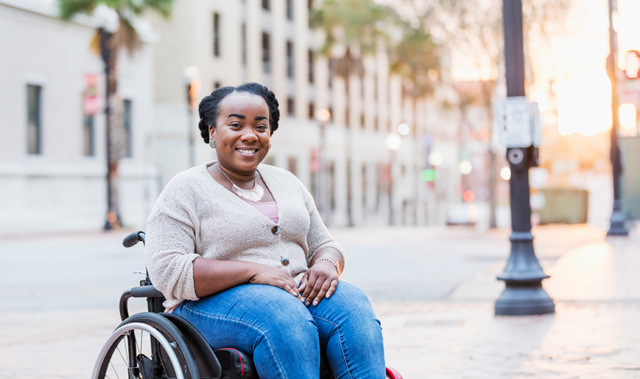Filter


Workers on Federal Disability Often Exceed Earnings Cap
To qualify for federal disability benefits, individuals must demonstrate that a medical condition prevents them from working. But some disability beneficiaries do work and those who earn more than Social Security allows are not entitled to a monthly benefit. These working beneficiaries may run the risk, often unwittingly, of being overpaid. The overpayments must be paid back, which can cause hardship for a group of individuals who are already struggling financially. According to researchers at Mathematica, the risk is high that working beneficiaries receive payments they aren’t entitled to. While only 4 percent of the people in this study have earnings above the monthly limit, the Social Security Administration overpaid 82 percent of them during the decade the researchers…
February 13, 2025
During COVID, Applicants Adjusted to Social Security Office Closings
When COVID swept in, the U.S. Social Security Administration responded quickly and closed its field offices on March 27, 2020. They remained closed for two full years, largely eliminating the option to apply in-person for federal disability benefits. So what did people who needed to apply do instead, and how did the closings affect the flow of applications? Were some people with disabilities deterred from applying at all? New research answers these questions by analyzing Social Security’s data for online, telephone and in-person applications to assess the impact of this unprecedented disruption in the agency’s in-person services. The researchers estimate that the suspension of in-person applications caused a 6 percent decline in all disability applications submitted to the agency over…
February 6, 2025
Paid Sick Leave Helps Older Workers, Who Need it Most
It’s common for older workers to develop an acute medical problem requiring immediate attention or to have a spouse or parent who suddenly becomes ill and must be cared for. Paid sick leave provides the flexibility for short periods to cope with the medical and caregiving demands that crop up more frequently as people age. A new study confirms these policies are very effective in helping older workers in particular maintain their level of employment while they get through a crisis. Providing paid sick leave is a fairly common practice in this country. A majority of workers already have access through their employee benefits. Over the past decade, a growing number of state and local governments have also mandated paid…
January 30, 2025
Caregivers Need Help and Know What They Want
Some 38 million family caregivers spend an estimated 36 billion hours a year caring for their loved ones. The patchwork of federal and state assistance available to them doesn’t match up to the weight of this burden. One policy in particular stands out as something they feel would help them: direct payments for their time spent as a caregiver. While this benefit exists under numerous state Medicaid programs, these programs help limited numbers of people because the eligibility requirements are very difficult to meet. Yet direct payments were by far the most popular policy option: 44 percent of the caregivers who participated in recent focus groups said this was their top choice among various options for financial assistance. Direct payments…
January 23, 2025
How COVID Inflation Spike Hit the Disability Community
People with disabilities make all kinds of purchases most workers never need. They might have to buy a wheelchair, build an access ramp, or take cabs because they can’t drive. People with hearing, vision or speech disabilities use electronic or computerized assistive devices and software. Some need home health aides, and many spend more on medical care. To fully understand their specific needs, researchers at Stony Brook University and RAND developed a detailed survey of nearly 2,000 people with disabilities, using input from experts with disabilities themselves or experience in the field. The authors conducted an analysis of the survey data on people who are receiving benefits from Social Security’s disability program or its companion program, Supplemental Security Income. Their survey reveals…
January 16, 2025
A Model for Elder Care? Supported Housing Offers Some Hope for the Future
Much of what I’ve been writing about lately are the dire prospects for elder care when the oldest baby boomers begin reaching their late 80s within a decade. The challenges we will face are exacerbated by the physical design of our communities based on single-family homes scattered around the suburbs. This leads to the isolation of seniors, especially when driving becomes difficult and older adults can become confined to their homes. It can also make it expensive to provide services in their homes as home care workers, visiting nurses, and other providers must travel relatively long distances to serve their clients. Fortunately, there’s an alternative. In my latest Risking Old Age in America podcast, Lizbeth Heyer, President of 2Life Communities in greater Boston, describes…
January 14, 2025
State Auto-IRA Savings Could Affect Medicaid Eligibility
Low-income retired couples with less than $3,000 in assets can get Medicaid to supplement their Medicare insurance or pay for a nursing home. This asset cap, set by state governments, mainly applies to financial accounts and excludes the value of a home and vehicle. But Medicaid coverage in old age could conflict with auto-IRA initiatives in a growing number of states – 16 so far – that are designed to help workers without an employer 401(k) save for retirement. The substantial savings workers will build up in these auto-IRAs could make some ineligible for the extra health insurance coverage once they retire, even if their income meets the program’s income cap, according to a new study by the Center for…
January 9, 2025
Racial Inequities Carry Over from Work to Retirement
The Social Security Administration encourages applicants for its research grants to explore “the structural barriers that may contribute to disparate outcomes among people who have been historically underserved, marginalized, or adversely affected by persistent poverty.” Numerous studies resulting from this research agenda reveal deep differences in how older Black and White Americans experience work and retirement. The studies have been conducted by researchers around the country, and many have been covered in this blog over the past year, which is also supported through a grant from Social Security. Consider some studies that have relevance for a central argument made by financial advisers – that the best route to security in retirement is for older workers to delay signing up for…
January 2, 2025
Retiring from Farming is Complex and Not Always Planned
The decision to retire is complex enough. But throw a family farm into the mix and it introduces a host of issues most people never think about. How long will the farmer be physically capable of doing this work? Are any of the adult children willing to take over the operation, and which one? Will the farm continue to eke out a profit, and could it be sold to another farmer or agribusiness? And these decisions are not easy for aging farmers who have spilled blood, sweat and tears on the land for decades. A survey created to explore their unique concerns takes a first stab at understanding the resources available to help farmers devise their unusually complex retirement plans…
December 19, 2024
Happy Holidays!
We hope our readers have a joyful holiday season and a peaceful new year. We’ll return Jan. 2 with a recap of some of our 2024 blogs!…
December 17, 2024
Moving from Medicaid to Medicare May Mean Better Care
Medicare accounts for more than 10 percent of federal spending. Medicaid, which covers 90 million low-income workers and disabled people, has the largest enrollment of any government insurance program. The conventional wisdom on these major programs is that Medicaid, which pays less for physicians’ services, provides lower-quality medical care than Medicare. But research is scant on whether that’s the case and where the Medicaid coverage might fall short. A new study focused on an older population with a high need for care found that total government spending on each Medicare patient is $2,100 more than the spending on each Medicaid patient – or an additional 13 percent. Harvard University and World Bank researchers used federal data to track two groups of…
December 12, 2024
Report Paints Picture of Care Workers in the United States
This post was written by Harry Margolis, a new contributor to the Squared Away Blog. I’ve been ringing the alarm about the coming elder care crisis beginning in about a decade when the oldest baby boomers start reaching their late 80s. One of the biggest challenges will be the shortage of direct care workers. PHI, a nonprofit that supports care workers, recently issued a report: Direct Care Workers in the United States: Key Facts 2024. Here are some of its findings: Low Pay Female, Older, People of Color Overall, the report tells us that we rely on a low-income, female, largely minority and immigrant workforce to care for our elderly and disabled citizens. As the need for elder care grows, t…















